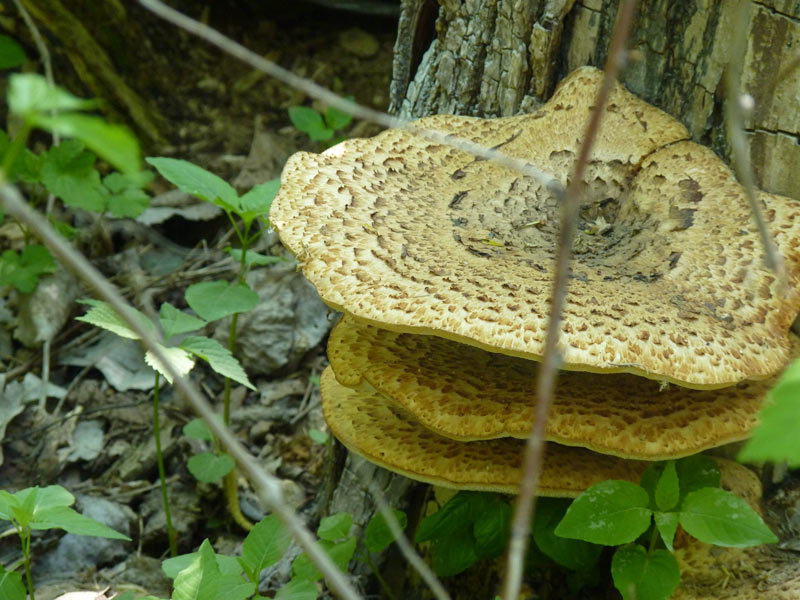Dryad’s Saddle, also known as Polyporus squamosus, is a delightful mushroom that you can find the spring and fall cool weather. I first learned about this mushroom earlier this spring, and I must say, I gorged myself on it quite a bit because its easy to find, easy to spot, and relatively abundant here in South-East Michigan. You can often see them growing on trees, even from the road as you are driving. I found another huge mushroom flush recently this fall, after we had some good rains.
The name, Dryad’s Saddle, harkens back to the dryads of Ancient Greece. Dryads are tree spirits, usually female, with “drys” referring to “oak”, so most literally, the dryad is an oak tree spirit (although the name is more broadly used today). Of course, you can find Dryad Saddle on trees that aren’t only oak. I rather like the name, and when I find the dryad’s saddle mushroom, I know there is a strong spirit in that tree, one that needs a saddle to ride or a nice strong mushroom to sit upon! Pheasant’s back is another name sometimes given to this mushroom.

Dryad’s Saddle is not considered a “choice” mushroom within the mushroom hunting community; I’m starting to think that people who don’t eat them have never actually tasted them, or don’t know how to harvest them properly. I like the taste of these mushrooms a lot; the mushroom has a nice flavor reminiscent of a cross between a tangy peanut and a portabella mushroom, and if you get it when its young and tender, it doesn’t require that long of cooking.

I’ve found Dryad’s Saddle mushrooms both out in the open and under full shade in the forest–always growing on hardwood logs, sometimes living trees with a dead spot, and sometimes fully dead trees or fallen trees. As they get larger, they do start to look like a saddle, and the inside of the mushroom becomes very tough (although I bet you could still make a nice broth of it–but I haven’t tried that yet). When they are young, you can pretty much eat the whole thing (see photo above). When they get larger, to harvest them, you only cut off the first 1″ or so of the mushroom–cut the mushroom off in a ring around the outer edge, leaving the rest. This is also a very sustainable method for harvesting them.
When you find one bunch of them, there are often others. The same tree doesn’t seem to flush more than once a year–I went back to my earlier spots this fall, and they aren’t growing, but I did find many new ones in other spots nearby. So look around, remember where you find them, and keep checking new spots to find more mushrooms. The photo below shows the two layers the mushroom has–the top is solid and the bottom has little pores. If you find them too late, worms will eat into them, and then you might have to cut around the worms. The particular batch I harvested and took photos of was prime, however, and had no such insect damage!

I do suggest once you’ve harvested them, you want to eat them within a day or two. I cut mine into fine slices (see below) and then fry them up in some butter or olive oil and add fresh herbs. I try to eat them within a few hours–if you wait too long, they seem to get harder and tougher. You can use them in any dish that would ask for mushrooms–I like them by themselves or on salad or in scrambled eggs. They are really quite delicious, and really easy to find.




Latest mushroom I had was a puffball.
I saw some diamond puffballs last week, but there weren’t enough of them to harvest….
Thanks for the advice.
You are most welcome. Thanks for reading!